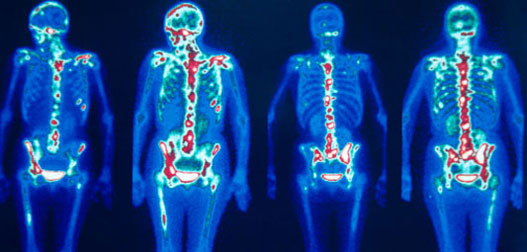|
Health
Check
3 numbers you should track
If you are serious about getting healthy in 2016:
For many of us, the new year is the time to start losing those extra
holiday pounds and to start focusing more on our overall health.
 We
all know that our blood pressure and cholesterol levels are important in
the quest to stay healthy. But there are other numbers we should know as
well. Here NBC News medical contributor Dr. Natalie Azar talks about the
important health numbers to track We
all know that our blood pressure and cholesterol levels are important in
the quest to stay healthy. But there are other numbers we should know as
well. Here NBC News medical contributor Dr. Natalie Azar talks about the
important health numbers to track
Heart Risk Calculator
An online risk assessment tool (http://cvdrisk.nhlbi.nih.gov/) this
estimates your 10-year risk of having a heart attack. It can be used by
people ages 20 and up who do not have heart disease or diabetes.
To take it, you need to know your total cholesterol, your HDL or
'good' cholesterol, and your systolic blood pressure, which is the first
number of your blood pressure reading. Plug the information into the
calculator to find out your risk score, which could determine whether
you should be treated with statin therapy.
"If you're above 7.5 percent on that calculator, you are
theoretically a candidate for statin therapy," warns Azar.
Blood Sugar Test: Hemoglobin A1C
This blood test (http://www.niddk.nih.gov/health-information/health-topics/diagnostic-tests/a1c-test-diabetes/Pages/index.aspx#15)
gives doctors information about your average level of blood glucose over
the past three months, as opposed to a one-time check of your level at
that moment in time. Doctors will use the result of this test to help
diagnose diabetes and it is used in diabetes management. There are no
symptoms of diabetes early in the disease, and testing allows doctors to
diagnose and treat diabetes before complications take hold, and to
detect pre-diabetes.
Who should have this test? "There's no exact date or age when you
should start getting the hemoglobin AIC, but if your regular blood
sugars are showing high levels repeatedly or you have a family history,
this is a number that you'd want checked, and it is also used to monitor
treatment," says Azar.
According to the American National Institutes of Health, a level
below 5.7 is normal, 5.7 to 6.4 indicates pre-diabetes and 6.5 or above
indicates diabetes.
Bone Test: Osteoporosis/Fracture Risk Test
Called the FRAX test (www.shef.ac.uk/FRAX/tool.jsp) it was developed
by the World Health Organisation to evaluate the risk of fractures. The
test results give people ages 40 to 90 their 10-year-probability of a
hip fracture and the 10-year probability of a major fracture anywhere in
the body, in places like the forearm, hip or shoulder. The result of
this test should be used along with your bone density test results to
decide on whether or not to treat for osteoporosis.
And in the name of good health, Azar reviewed the health numbers to
remember:
Blood pressure
Prehypertension: 120-130 systolic, or 80-89 diastolic
High blood pressure stage 1: 140-159 systolic or 90-99 diastolic
Cholesterol
Desirable: Less than 200 mg/dL
Borderline high: 200-239 mg/dL
High: 240 mg/dL or higher
BMI
Underweight: <18.5
Normal weight: 18.5-24.9
Overweight: 25-29.9
Obese: 30 and above
-Today Health
|

